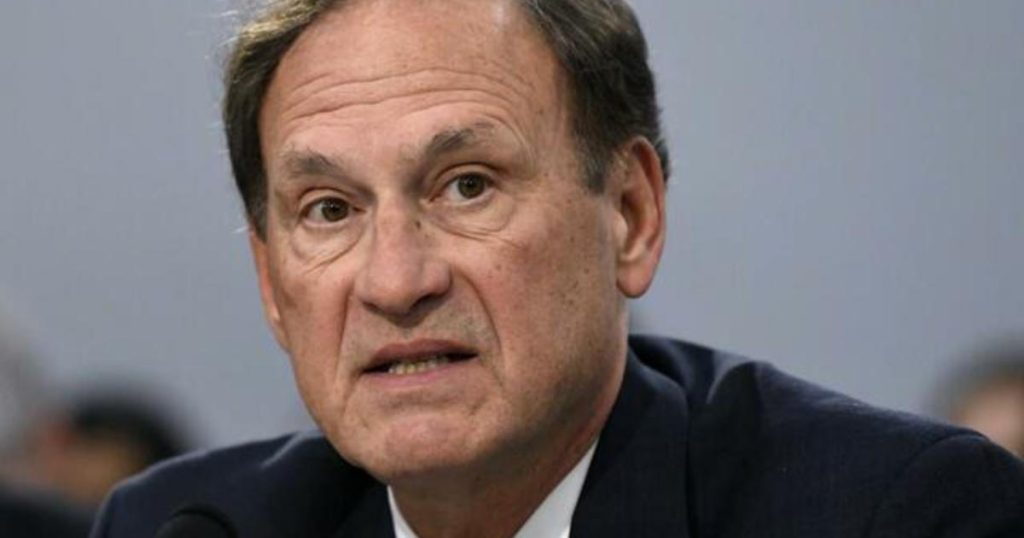Supreme Court Justice Samuel Alito is facing scrutiny over an upside-down U.S. flag displayed outside his home. The flag was turned upside down, a symbol that became associated with the “stop the steal” movement following the 2020 election. This movement was used by rioters and election deniers who claimed the election was stolen from former President Donald Trump. Alito’s decision to display the flag in this manner has raised questions about his political beliefs and affiliations.
The upside-down U.S. flag has sparked controversy and debate, as some believe it is disrespectful to the country and its symbols. The flag has historically been displayed upside down as a distress signal, but it has also been used as a symbol of protest or dissent. In this case, the flag’s meaning is tied to the rhetoric surrounding the 2020 election and the events that followed. Alito’s decision to fly the flag in this manner has drawn criticism from those who believe it is inappropriate for a Supreme Court Justice to align themselves with a movement that has been associated with violence and unrest.
Justice Alito’s actions have reignited discussions about the role of the judiciary in politics and the principles of impartiality and neutrality that judges are expected to uphold. Supreme Court Justices are supposed to remain impartial and avoid taking sides in political debates, but Alito’s display of the upside-down flag raises questions about his political beliefs and affiliations. Critics argue that Alito’s actions undermine the public’s trust in the judiciary and call into question his ability to remain neutral on matters that may come before the court.
The controversy surrounding the upside-down U.S. flag outside Justice Alito’s home has also brought attention to the broader issue of political polarization and the impact it has on the judicial branch. The Supreme Court is increasingly seen as a political institution, with justices often being labeled as conservative or liberal based on their decisions. Alito’s decision to display the flag has reinforced these perceptions and has led to concerns about the court’s ability to remain independent and impartial in the face of partisan pressures.
As the controversy continues to unfold, it remains to be seen how Justice Alito will address the criticism and whether he will clarify the meaning behind the upside-down flag. Some have called on Alito to explain his decision to display the flag in this manner and to reassure the public that he remains committed to upholding the principles of neutrality and impartiality. Others have defended Alito’s right to free expression and argue that his actions should not be seen as indicative of his judicial philosophy. Regardless of the outcome, the incident has sparked an important conversation about the intersection of politics and the judiciary and the need for judges to remain above the fray in order to maintain public trust in the legal system.


